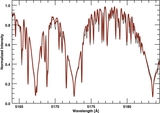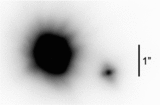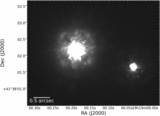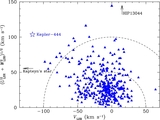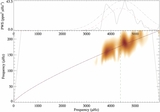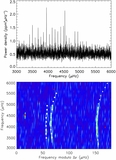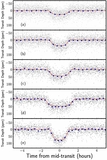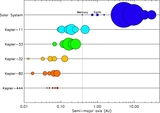Image Details
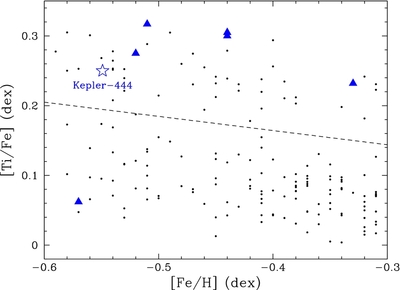
Caption: Figure 4.
[Ti/Fe] abundance ratio vs. [Fe/H] in the low-metallicity regime. Kepler-444 is denoted by a blue star. Blue triangles represent the Kepler planet-candidate host stars of Adibekyan et al. (2012a) with available titanium abundances. Black dots correspond to stars without planetary companions observed in the context of the HARPS GTO planet search program. The dashed line marks the fiducial chemical separation between the thin and thick disks (below and above the line, respectively; Adibekyan et al. 2012a) based solely on the HARPS GTO sample.
Copyright and Terms & Conditions
© 2015. The American Astronomical Society. All rights reserved.


